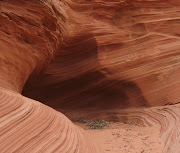
More than 5,000 light years away two slightly smaller planets are giving scientists reasons to do a staid happy dance. Discovery of a solar system with a reddish star showing at least two interesting planets with masses almost as large as Jupiter and Saturn opens the possibilities of life existing elsewhere. It reaffirms and highlights continuing exploration of the Heavens in space to go where no telescopes have seen before, to peek and stare. The final frontier needs prying eyes to determine is anything in the universe similar to Earth where Life might reside. Who knows whom or what may be looking back at us.
Neither of the two giant planets is a likely abode for life as we know it. But, Dr. Gaudi said, warm rocky planets — suitable for life — could exist undetected in the inner parts of the system.
“This could be a true solar system analogue,” he said.
Sara Seager, a theorist at the Massachusetts Institute of Technology who was not part of the team, said that “right now in exoplanets we are on an inexorable path to finding other Earths.” Dr. Seager praised the discovery as “a big step in finding out if our planetary system is alone.”
Since 1995, around 250 planets outside the solar system, or exoplanets, have been discovered. But few of them are in systems that even faintly resemble our own. In many cases, giant Jupiter-like planets are whizzing around in orbits smaller than that of Mercury. But are these typical of the universe?
 First, the Southern Hemisphere rookies and home astronomers rendered great assistance in finding the new neighborhood solar planets with their small desktop mini me telescopes because the window for observation in 2006 was so short. Professional astronomers observed the planets and the pull of the immeasurable force of the masses in a scholarly scientific fashion using gravitational microlensing and something intellectual called the wobble method to verify its existence. It is fairly common to find other planetary systems but not finding things. This confirms large scale similarities of the solar systems, but limits any conclusions about how the star heats the planet let alone the existence of any of the properties for water in either molecular or frozen form.
First, the Southern Hemisphere rookies and home astronomers rendered great assistance in finding the new neighborhood solar planets with their small desktop mini me telescopes because the window for observation in 2006 was so short. Professional astronomers observed the planets and the pull of the immeasurable force of the masses in a scholarly scientific fashion using gravitational microlensing and something intellectual called the wobble method to verify its existence. It is fairly common to find other planetary systems but not finding things. This confirms large scale similarities of the solar systems, but limits any conclusions about how the star heats the planet let alone the existence of any of the properties for water in either molecular or frozen form.Scientists seem wistful that the new solar system and the new celebrity planets are so far away for further detailed study. NASA has spoken out with urgency on the need to involve the nations of the third rock from the sun in making manned space flight to Mars possible, rather than just a US aim. For one thing the cost is prohibitive, for another the physics are challenging but not as insurmountable as the time projected would be in the 2030s. The discovery of the new solar system just upped the ante to garner more interest.Just 25 multi-planet solar systems have been mapped so far and this is the first one that really seems to resemble our own, said lead author Scott Gaudi of Ohio State University.
"It's like a scaled-down version of our solar system," he said in a telephone interview.
These planets orbit a star which is "smaller, colder and dimmer than the sun," Gaudi said, adding that the planets are closer to their parent star than Jupiter and Saturn and a bit cooler.
"We don't know anything about them except their mass," he said.

Starting at the home planet learning about the Earth and its environs is helped along by understanding how the Earth evolved to study similar situated planets a few thousand light tears away. Ancient Earth, Ancient Skies: The Age of the Earth and Its Cosmic Surroundings gives a primer on the subject. G. Brent Dalrymple offers an engaging look at the science and the theories on understanding Earth.











No comments:
Post a Comment